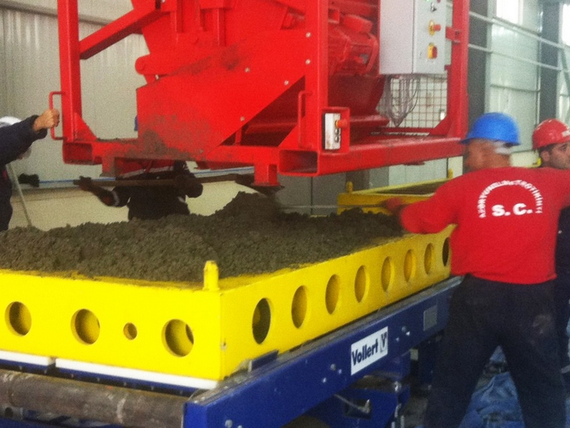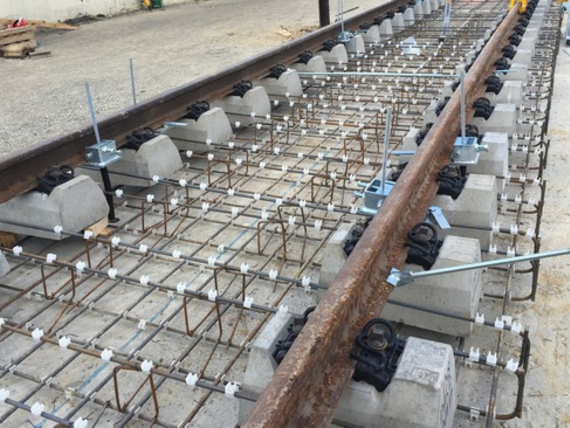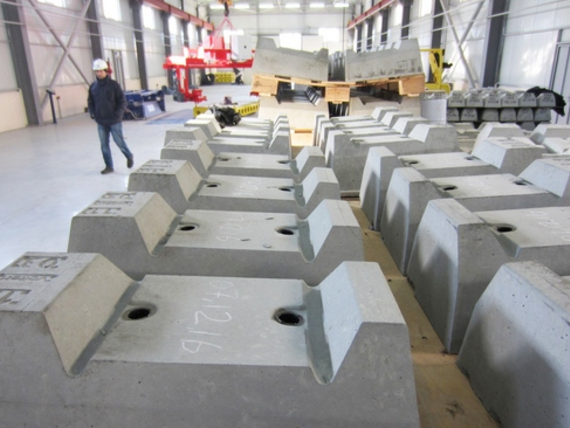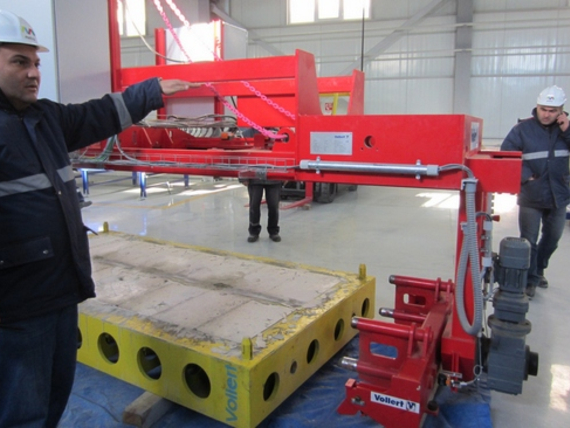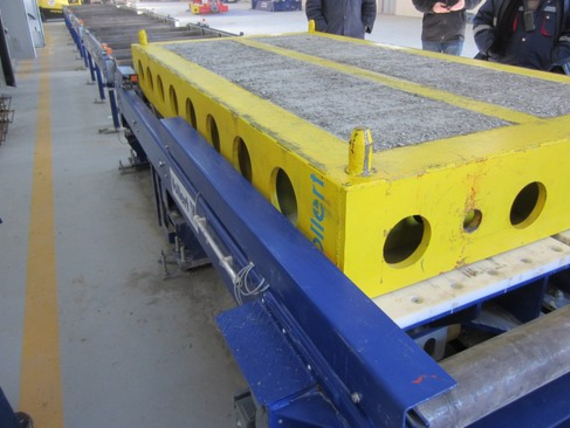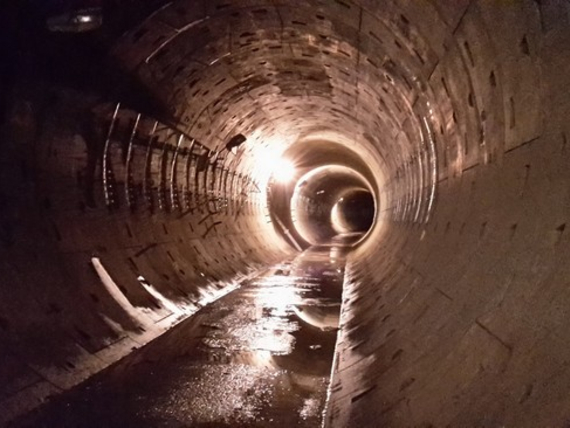Baku is booming. The capital city of Azerbaijan on the Caspian Sea is one of the fastest growing cities in the CIS states. Thanks to oil and gas, economic growth has risen by 35 percent in the last ten years alone. The infrastructure of the city of 2.2 million inhabitants can barely keep pace with these growth dynamics. One of the greatest challenges is the local public transport. Following independence on 18 October 1991, the Azerbaijanian economy initially went downhill and one state-owned company after another was forced to close down. Tram operations ceased in 2000, followed in 2007 by trolley buses. Since then the Metro, which has since been privatised, has transported over 200 million passengers through the underground every year. On a route system with a present length of 36.7 kilometres, over 720,000 passengers are transported daily between the 25 tunnel stations on line 1 and a section of line 3 that has already been completed. The technical limit is 750,000 passengers per day.
Vollert's know-how won the contract
The underground railway in Baku, which was begun as early as 1932 and extended between 1967 and 1980, has not only almost reached its capacity limits, but is also technically obsolete. Underground railway trains of the Soviet series "E" and "81-7" run on Russian wide-gauge tracks with the third rail on the left-hand side. The track system and vehicles are no longer up to the present-day standard. State President Ilham Aliyev, who wants to form stronger links between Azerbaijan and the European Union and to orient himself to European standards of business and technology, initiated an urban development plan for the capital city in 2009. A central aspect of the plan is the renewal and expansion of the underground railway network to a total length of 119 kilometres by 2030. 55 new underground stations are planned. Three new lines and Line 3 as a circle line are to be completed and extended.
The French engineering office Systra from Paris, a specialist in the design and development of railway traffic and urban railbound local public transport, elaborated a master plan for the 5.6 billion euro project and began with the implementation in 2012. Also involved since the beginning of 2016 is the Weinsberg-based Vollert Anlagenbau GmbH. "The track system is not part of Systra's scope of supply. Baku Metropolitan CJSC (closed joint stock company), founded by the State President Ilham Aliyev on 27 February 2014, was therefore looking for a service provider that could cover everything to do with the track system - the planning of the track network, the production of the concrete sleepers and the structural implementation of the network - and stumbled across us through our references such as the Gotthard tunnel or the concrete sleeper plant in Afyon in Turkey or Monterrey in Mexico," says Steffen Schmitt, sales manager for concrete sleeper plants at Vollert.
Cooperation with engineering office and concrete specialist
Even during the very first meeting it became clear that it was not just a plant for the manufacture of concrete sleepers that was wanted, but also the planning of extensive engineering services. "Our task was to plan the entire track system according to the latest technical standards, to lay out the new routes accordingly, to solve the interfaces with the existing track system, to re-plan dilapidated sections and to design the concrete sleeper plant is such a way that it covers both the present and future needs," says Schmitt. In cooperation with Dipl.-Ing. Jürgen Rademacher from the Office of Traffic Engineering in Berlin and Dipl.-Ing. Andreas Titze, a specialist in concrete technology, Vollert redesigned the entire track system, executed the project planning and tested it on a test section under real conditions. That solved a whole series of questions: For example, how must the substructure for the solid railway track be constructed in the tunnel section lined with tubbings? What sort of reinforcement is to be used? How strong must the concrete be, and what type of concrete is best suited? What solution is suitable for wastewater? What sort of points can be planned and how will the points be fastened to the concrete? And what needs to be observed at the transitions to the sections with timber sleepers?
The existing track network of the Metro in Baku dates back to an original form of solid railway track, in which tar-impregnated timber sleepers are grouted with concrete following the mounting of the rails and a channel is kept free in the middle for drainage. Timber sleepers have a comparatively short service life. They must be frequently maintained and elaborately repaired. Long route sections often have to be renovated. In underground railway tunnels that can only be done with a temporary shutdown and results in huge losses of income. Concrete sleepers have the advantage that they provide greater stability due to their heavier weight. "And they require less maintenance, are more environmentally friendly and considerably more durable. We were faced with a requirement for a service life of up to 50 years," says Steffen Schmitt. Accordingly, the maintenance intervals are longer, the maintenance entails less effort and renovations are necessary only at significantly longer time intervals.
Vollert-Rheda-System
Vollert made use of the proven Rheda system for the construction of the solid railway track in the new route sections. The first experiments with solid railway tracks took place in Germany as early as the 1920s. However, it wasn't until 1972 that a solid railway track was implemented for the first time in Germany on a public route - at Rheda-Wiedenbrück railway station - as the superstructure in place of a conventional ballast/sleeper construction. It consists of a thick, hydraulically bound base layer on which a steel reinforced concrete slab is placed. The concrete sleepers are aligned on the slab and fixed in place with filler concrete which is connected to the lower supporting slab via the reinforcement. In comparison with a conventional ballast superstructure, however, the system is very firm and offers little elasticity. "We have looked very intensively with this system and developed a special design for the superstructure. The result is that we can produce and install our concrete sleepers more simply," explains Steffen Schmitt. The Vollert Rheda system solves the method of fastening in elegant fashion. It is fixed quickly and simply with just a dowel. That makes the installation as well as the maintenance and service easier. The fastening, which was developed in cooperation with Vossloh, also irons out the disadvantages of solid railway tracks: it reduces the generation of noise, absorbs vibrations, provides for damping and thus offers high travelling comfort for the passengers.
But it didn't end with the planning of the track system. In a manner of speaking, Vollert has also taken over the building site supervision during the implementation. "That is the only way we can ensure that our concept is implemented as planned so that the concrete sleepers developed by us and produced on site can fulfil their task optimally," says Steffen Schmitt. The assigned engineers are present at all times and supervise the construction progress.
Tailor-made engineering package and state-of-the-art plant technology
At the same time as planning the track system, Vollert designed a concrete sleeper plant that manufactures tailormade sleeper blocks for the underground railway route. An extensive engineering package and state-of-the-art machine technology was necessary here, too. "For the special environmental and installation conditions in the Baku Metro, for example, we had to create our own concrete recipe and a testing plan for the continual quality assurance of the fresh and hardened concrete," explains Igor Chukov, sales manager for Russia and the CIS states at Vollert. The sleeper design had to be conceived with regard to the maximum axle load of 50 t, the maximum speed of 50 km/h and the fastening factors. The position of the fastening system had to be determined, the design parameters agreed with the structural engineer and the system checked for cost-effectiveness. The innovative sleeper design developed by Vollert for the Metro in Baku ensures optimum rigidity and a homogeneous distribution of the vibration force. The sleepers are dimensionally accurate to +/- one millimetre.
"In the planning of the concrete sleeper production we chose a semi-automated mould circulation plant with flexible circulations, high work safety and sustainable processes," says Igor Chukov, outlining the plant concept. Four rigid steel frames, each with four mould tubs, are combined to form a sleeper block mould. This is transported through the individual production steps by rollers on the mould circulation track. A frequency-controlled 1.5 kW electric motor drives a 1.5 metrewide roller conveyor via toothed belts and ensures a roller conveyor belt drive speed of up to 0.3 m/s The sleeper block moulds are first cleaned with compressed air and oiled, then fitted with the reinforcement and the dowels for the later fastening of the rails before the concrete is poured. The reinforcement - a "steel cage" is prefabricated on site in the plant. The concrete is then poured manually into the moulds via a manually operated crane-mounted concrete distributor that holds around 1.5 m3 concrete. The concrete is also manufactured in a mixer in the plant. The concrete bucket has a special clamshell gate and a discharge screw. "That allows us to ensure an even concrete discharge," the Vollert project manager stresses. During the concreting process the sleeper mould is transported onto a vibrating station. An external vibrator provides for high-frequency vibration and the concrete is compacted. The sleeper mould is then put into storage in a temperature-controlled drying chamber, where the concrete hardens. Once the sleepers have hardened after a few hours, they are taken out of storage and transported to a demoulding station, where they are turned over by a turning manipulator and demoulded by an impact from a rocker disc. After knocking out, the mould is turned back to its original position and fed back to the mould circulation. Once knocked out, the concrete sleepers are taken to the rail support assembly, where they are fitted with the prefabricated fastenings and can then either be stored or delivered to the building site ready for laying.
First sections for the 50th anniversary
With 20 sleeper moulds, up to 30,000 sleepers can be produced per year in the concrete sleeper plant. Presently only about half of the capacity is being utilised and the concrete sleepers are being produced for storage. The daily production capacity will increase significantly in the summer when the construction work proceeds at full throttle. Sections 2 and 3 with several new underground stations along Line 3 are due to be completed this November. The Baku Metro will then celebrate its 50th anniversary. Numerous international guests will be invited to the opening, including many Metro builders from all over the world. "The international trade world will take a look at our solutions. We're looking forward to that and are proud to be playing a major part in the modernisation and expansion of one of the most important Metros in the CIS states," says Steffen Schmitt.

